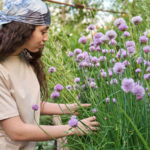As winter fades away and the sun begins to warm the earth, it’s time to prepare your garden for an abundant spring season. Whether you’re a novice gardener or a seasoned green thumb, there’s always something new to learn about caring for your plants as they awaken from their winter slumber. This comprehensive guide will outline the essential tasks and tips for tending to your garden this spring, ensuring you’re ready for a bountiful harvest come summer.
Preparing Your Soil for Planting
The foundation of any successful garden lies in the quality of its soil. In order to give your plants the best chance at thriving, it’s important to properly prepare the ground before sowing seeds or transplanting seedlings.
Testing Your Soil
Start by checking the pH level of your soil with a simple home test kit. Most vegetables prefer a soil pH between 6.0 and 7.0; if your soil is too acidic or alkaline, amend it accordingly with lime or sulfur.
Fertilizing Your Soil
Once your soil’s pH is in check, it’s time to add some nutrients. Incorporate organic matter such as compost or aged manure into your soil to improve its structure and provide necessary nutrients for healthy plant growth.
A well-balanced fertilizer can also be applied, but be sure to follow the package directions for proper application rates.
Tilling Your Soil
To ensure a strong root system and promote healthy development, loosen the soil by tilling or turning it over with a fork or spade. This will help break up any compacted areas that may hinder root growth.
April Planting: What to Sow and Transplant
As the weather warms up, it’s time to get your hands dirty and start sowing seeds directly into the garden or transplanting young seedlings. Here is a list of some common vegetables that can be planted in April :
- Tomatoes:
Start these sun-loving plants indoors 6-8 weeks before your last frost date, then transplant outdoors once nighttime temperatures are consistently above 50°F (10°C). - Peppers:
Similar to tomatoes, peppers should be started indoors and transplanted after the danger of frost has passed. - Corn:
Sow corn seeds directly into the garden in mid to late April. Space rows about 30 inches apart, and plant seeds approximately 1 inch deep. - Beans:
Both bush and pole beans can be sown outdoors in April. Plant seeds about 1 inch deep, spacing them according to the variety’s requirements.
Starting Seeds Indoors
If you live in an area with a short growing season, starting seeds indoors can give your plants a head start on the growing process. Seed trays, peat pots, or other containers can be filled with a sterile seed-starting mix and moistened with water. Place seeds into the mix according to their planting depth requirements and cover with additional soil as needed.
Keep the soil consistently moist, but not soggy, and provide warmth and light until seedlings are ready to be transplanted outdoors.
Pest Control and Prevention
As the weather warms up, pests will begin to emerge from their winter hiding places and seek out tasty plants to munch on. Here are some tips for preventing and controlling common garden pests.
Check Plants Regularly
Inspect your plants regularly for signs of insect damage or disease. Catching problems early can help prevent them from becoming major issues that can harm your entire garden. Look for holes, yellowing leaves, or wilted growth as potential indicators of trouble.
Encourage Beneficial Insects
Many insects are actually beneficial to the garden, helping to control harmful pests by feasting on them. Ladybugs, lacewings, and parasitic wasps are all examples of beneficial insects you’ll want to attract to your garden.
Plant flowers such as marigolds, dill, and yarrow to provide a habitat for these helpful critters.
Use Organic Pest Control Methods
If you do encounter pests, opt for organic methods of control whenever possible. Homemade sprays made from ingredients like garlic, hot peppers, or soap can be effective at deterring certain pests without harming your plants or the environment.
April Garden Maintenance Tasks
Beyond planting and pest control, there are several other tasks that should be completed in April to keep your garden in tip-top shape. Here are a few key maintenance jobs to tackle this month:
- Weeding: Stay on top of weeding to prevent unwanted competition for nutrients, water, and sunlight. Pull weeds by hand, or use a hoe to loosen the soil around their roots for easier removal.
- Mulching: Apply a layer of mulch around your plants to help conserve moisture, suppress weeds, and regulate soil temperature. Organic mulches like straw, shredded leaves, or grass clippings break down over time and add nutrients to the soil as they decompose.
- Watering: As temperatures rise, be sure to provide your plants with adequate water. A general rule of thumb is to give your garden about 1 inch of water per week, but this can vary depending on factors like rainfall and soil type.
- Pruning: If you have fruit trees or shrubs, now is a good time to prune them for improved airflow, sunlight penetration, and overall plant health. Remove dead, damaged, or crossing branches to encourage new growth.
With these essential tasks in mind, your garden will be off to a fantastic start this spring. Remember that tending to your plants and maintaining their environment are ongoing tasks that require dedication and care throughout the growing season. However, the reward of a bountiful harvest makes it well worth the effort.
Happy gardening!



